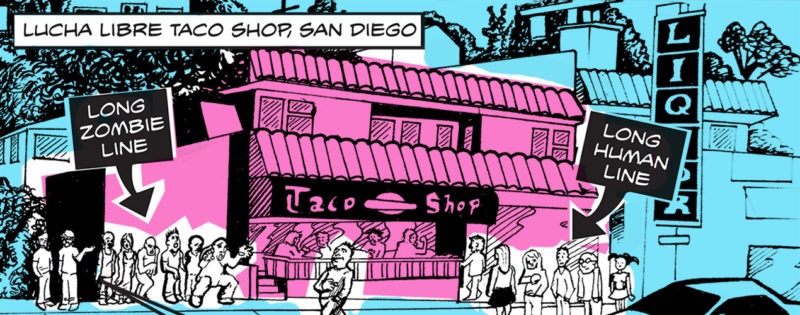Consumerism, social networking, and SEO have changed dramatically in the past five years, so much so that startups and established businesses alike are feeling overwhelmed.
“When and where should I post?” and “What’s the best article we can push today?” and “How can I get a better Google PageRank?” are the questions on everyone’s minds, and they’re having an interesting impact on website content management and design.
Many business blogs throw everything out there but the kitchen sink – the “spray-and-pray” approach – hoping to connect with anyone they can. This reflects a lack of research and planning: a lack of attention toward curating content. Other blogs freeze up and melt away because of time constraints and no immediate results. In addition, decoding algorithms, staying ahead of marketing trends, and keeping up with evolving social media can relegate curating content itself to a secondary consideration.
Given the demands of running a business, all of this is understandable. But it’s also unsustainable for companies aiming to make a lasting impact. Implementing a blog that attracts visitors via search and social and can convert them into clients requires hard work, resources, and – yes – even a little patience.
It all begins with curating content. Here’s how we can help bring it back to the forefront of the conversation.
Curating Content Reflects the Work You Do
The design of your site, logo, and blog posts is a reflection of the core values of your business. In fact, all of the content you put into the world is a reflection of your core values. When you haphazardly post a new blog entry that looks as if it were pushed out in less than an hour, you’re giving your customers an idea of what you stand for – and it ain’t quality control.
Trust me: I found out the hard way. In the fall of 2013, I was personally a part of an international media frenzy around a comic tattoo that I have on my arm. I was on CNET, The Huffington Post, the New York Daily News, and many more. I learned a great deal from this exposure, but perhaps the greatest lesson was the one I learned about curating content.
In the span of the first couple of weeks of news coverage, I received more than 20,000 visits to my website, YurickComics.tumblr.com. The attention that I received due to the viral nature of the story was completely overwhelming, and I wasn’t prepared. Some of that traffic could have converted into new illustration clients and customers. (And had I been working with BuzzFarmers at the time, I would known better!) In the weeks following the media frenzy, my traffic dwindled to the same numbers I had previously held on the site.
How about you? Are you ready for a burst of press?
[Tweet “Always curate your content so that it reflects the whole of your work.”]What you can learn from my example is to always organize your content so that it reflects your business objectives. Curate it so that it reflects exactly who you are, and make sure it isn’t confusing for your audience. I never told people I was an illustrator for hire — does the content your curate on your blog tell people how they can get more of you? Does it tell them what products or services they can buy?
Imagine that, tomorrow, one single project, product or blog post will go viral and that 20,000 people are going to be at your door. What do you want them to do when they get there? This kind of mass attention is probably what you want for your business.
Prepare all of your content with the belief that you’re getting 20,000 visits tomorrow. It happened to me.
Curating Content for the Right Audience
The situation: You’ve been staring at your analytics for months, and you’re consistently getting the same thousand visitors to your site.
What if I told you one of those visitors was a millionaire investor looking to finance your startup so that it can move to the next stage? Imagine she has been visiting once a day for a month or so to see what you do next, secretly considering giving you seed capital. Now, I’m guessing you’re thinking very differently about the “only the same thousand visitors” to your website.
Remember to imagine, prioritize, and generate content for your many customer personas, but craft work specifically for the most important of them: the fans that will plunk down hard-earned money to see you succeed. Who are they? What are they looking for? The name of the game, in the 21st century, is to put your effort into connecting with the right customers – not necessarily all of them.
In Amanda Palmer’s case, the right amount of customers was 25,000. That was all she needed to reach to generate $1.2 million.
You might be saying, “But, Patrick, she’s Amanda freaking Palmer.”
To that I say, “So what?”
What Palmer did was something we can all learn from. Curating content for a specific audience was her secret. An audience that wanted to see her succeed. If you only have eight visitors to your site, and only half of those are new eyes on your content, that means in one year’s time, you will have had about 1,432 people see your site. Curating content for those 1,432 people could mean that they each give you $50 for your service, which would amount to around $71,000 for your business in a year from a start of just eight visitors.
That’s a pretty unlikely scenario, of course, but do you see the potential and implications? Curate content for your site that talks directly to your target audience. Think about how you can create loyalists out of all of the viewers who see your new content. Create blog posts, and always, always, relate it back to a product somehow. You don’t write for free, do you?
When you take the time to construct work to meet the standards of the customers who will mobilize, your content – and your company – will succeed.
How did you develop your business blog’s identity? Can you add any advice about curating content in the comments?





